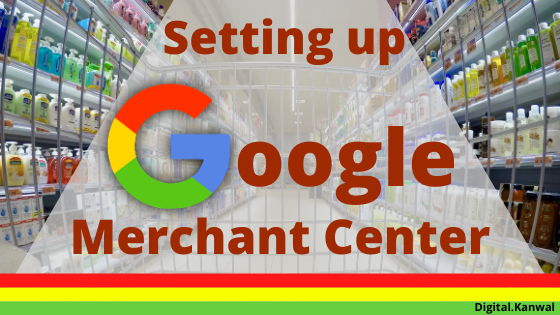Google Shopping Merchant Center
Google Shopping Merchant Center is a free platform by Google which allows user to upload their product catalog or listings to Google. These uploaded product listings can then be used in Google Shopping Ads to improve sales. Let us get started with setting up of Merchant Center.
How to set up Google Shopping Merchant Center?
Since Google Merchant Center is a platform of Google so one needs to have a Google id to log into it. Type in “Google Merchant Center” in your explorer address bar and reach at the login screen.
Sign in to Merchant Center and enter the following information:
- Enter the country of your business operations.
- Type in the Business name.
- Mention your country’s Time Zone.
- Accept the terms of use and click on Continue.
- Choose the purpose of your adding products to the Merchant Center and click on continue.
- Click on Create your account to get started.
You will taken to the Merchant Center Overview screen.
- Click on Tools and then Business information.
- Update your business information in detail in “About your business” section
- Enter the Website URL for your online store. Make sure you own the URL as you need to verify and claim it for product additions.
- Proceed further to claim your URL which can be done in multiple ways.
- Once done, click Verify URL to submit your URL to Google Search Console for verification and claim it.
Once website URL is verified and claimed, it can be used as the landing page for your Google Shopping ads.
Go to Tools and then “linked accounts” to connect Google Ads account with the Merchant Center. It will enable pulling products in Google shopping type ads.
Move to your Google ads account to approve for connecting the Merchant Center to it.
How to add products in Google Merchant Center?
Go to Products option displaying on left side of the Merchant Center overview screen.
Products can be added manually on one-on-one basis or through product feed file / Google Shopping feed / Merchant Center feed. Adding products manually can be quite tiresome and there are multiple ways to get the products added quickly –
- Using product feed file which can be submitted using Google sheets or XML files.
- If product details are easily available in some tabular form, requisite details can be uploaded in a Google sheet. These details are then fetched in by the Merchant Center and thus products become available.
- There are multiple plug-ins available which helps exporting product details from the website or Woo-commerce in XML form. This XML file can then be used to upload products in the Merchant Center. “Product Feed Pro” is a popular plug-in available for WordPress sites which facilitates export of product details.
Thus we can run Google shopping ads for our products listed in Google Merchant account. It is a very useful tool for the businesses which have e-commerce stores and want to take advantage of Google Shopping ads to promote their products.
Tune in to my facebook, twitter and instagram account to know more about the digital marketing and how it can help scale your business to new heights.
You can read more about setting up of Google Shopping Merchant Center here or can reach out to me for any help. Best of luck and happy selling











